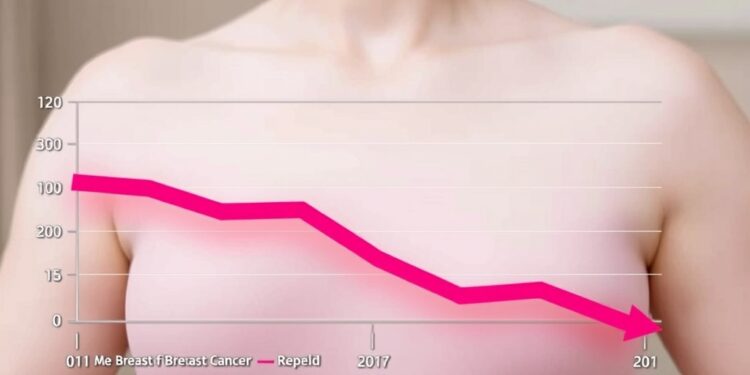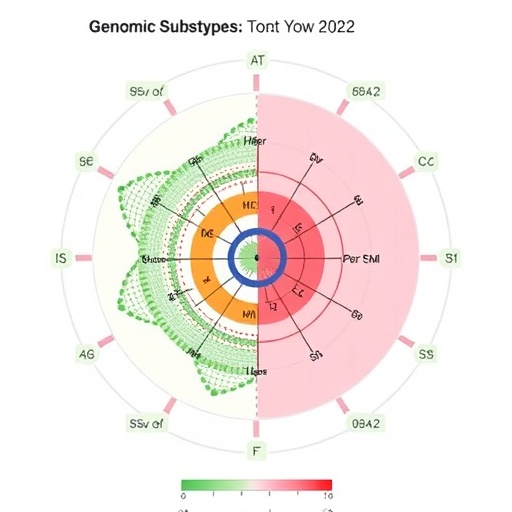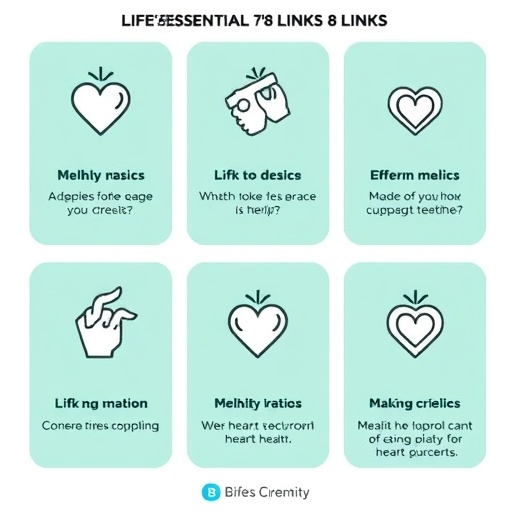Breast cancer has long been recognized as a significant public health issue, especially in the United States, where it has consistently been the second leading cause of cancer-related deaths among women. As we approach the year 2024, approximately 42,000 women are projected to lose their lives to this devastating disease. Recent findings published in the Journal of Breast Imaging by researchers Debra Monticciolo and R. Edward Hendrick present a concerning reversal of previous trends. The study indicates that breast cancer mortality rates have ceased to decline among women over 74 and reaffirmed that they have plateaud in women under 40. This shift signals notable implications for public health policy, risk assessment practices, and treatment strategies.
Historically, breast cancer rates have fluctuated significantly, particularly before the onset of the 1990s when they had been on the rise. However, post-1990 witnessed a steady decline in breast cancer mortality, a trend attributed to the increased utilization of mammograms and advancements in treatment methodologies. Researchers analyzed mortality data amassed by the National Center for Health Statistics and uncovered a staggering 43.5% decrease in breast cancer mortality rates for U.S. women from 1990 to 2022. Notably, the annual decrease has slowed considerably since 2010, marking a decline of merely 1.23% per year, the slowest rate since the study’s tracking began.
Among the younger demographic, specifically women aged 20 to 39, the research revealed that mortality rates had decreased by 2.79% per year from 1990 until 2010. However, this positive trend has stagnated since then, highlighting a critical area that warrants further investigation. As experts in the field, Monticciolo and Hendrick emphasized that these stagnating trends raise questions about current screening guidelines and their effectiveness in identifying breast cancer at earlier, more treatable stages.
The findings concerning older women are particularly alarming. The study found that, for women aged 75 and older, the breast cancer mortality rate had previously decreased by 1.26% per year from 1993 to 2013 but then stopped declining altogether. This stagnation sends a distressing message, suggesting that older women may not be receiving the necessary assessment and treatment to combat increasingly severe cancer diagnoses. In fact, the latest statistics indicate a dramatic increase in stage IV cancer diagnoses in both women under 40 and those over 74, further contributing to these mortality trends.
Stage IV breast cancer, characterized by its metastasis to distant organs, presents a grave prognosis, with a dismally low five-year survival rate of just 31%. This reality underscores the urgent need for revised healthcare protocols that focus on early detection and proactive screening practices. The medical community currently advocates for breast cancer assessments starting at age 25. However, screening recommendations for women under 40 are often limited to those identified as high-risk, while guidelines for women over 74 frequently discourage regular screening altogether.
The research highlights notable disparities among racial and ethnic groups within the study. The mortality rates for Asian, Hispanic, and Native American women are particularly concerning, having ceased their decline in recent years. Specifically, mortality rates have plateaued since 2009 for Asian women, 2008 for Hispanic women, and 2005 for Native American women. Contrarily, the news is more positive for Black women, whose breast cancer mortality rates have steadily decreased across all age groups, indicating that targeted interventions could be effective.
As the research indicates, the increasing rates of late-stage breast cancer diagnoses significantly correlate with the flattening of mortality rates. Health policymakers and practitioners must address the systemic issues leading to these discouraging statistics. Notably, the differences in screening protocols and healthcare access among diverse groups highlight a critical need for a reassessment of how breast cancer risk is evaluated and treated.
Monticciolo expressed her concerns about the implications of these findings, stating, “The fact that breast cancer mortality rates have stopped declining for women over age 74 is an alarming new trend. This is in addition to women under age 40 no longer seeing mortality rates decline from breast cancer. These groups are exactly those discouraged from breast cancer screening by some U.S. guidelines.” This stark reminder of the responsibility facing the medical community reinforces the necessity of ensuring equitable access to screening and treatment across all demographics.
As this study continues to gain attention, it raises fundamental questions about how society perceives breast cancer, the associated stigma, and the funding available for research into better diagnostic tools and treatment options. The urgent nature of these events cannot be overstated. Moving forward, there is a critical need to examine and potentially revise current health guidelines to ensure that both younger and older women receive appropriate screenings to enable early detection and better outcomes.
In conclusion, the recent trends in breast cancer mortality illuminate a fading promise, hinting at a healthcare landscape that has perhaps become complacent in its optimism. With the data presented, a comprehensive discussion regarding breast cancer screening, risk assessment, and treatment strategies is warranted, ensuring future generations have access to better preventative health measures. Ignoring the warning signs of stagnating mortality rates could cost lives and lead to an exacerbation of this public health crisis.
This research serves not only as a call to action but also a beacon of hope for future advancements in breast cancer care. Continued efforts to educate healthcare providers and the public about the importance of screening deserve unwavering attention, if we are to reverse the current trends and ensure a significant decline in breast cancer mortality rates once more.
Subject of Research: Breast Cancer Mortality Rates
Article Title: Recent Trends in Breast Cancer Mortality Rates for U.S. Women by Age and Race/Ethnicity
News Publication Date: 6-Mar-2025
Web References: https://doi.org/10.1093/jbi/wbaf007
References: To be updated as needed
Image Credits: To be updated as needed
Keywords: Breast cancer, mortality rates, cancer research, cancer screening, public health, health care, risk assessment, mammography.
Tags: aging and breast cancer ratesbreast cancer mortality trendsbreast cancer research findingsbreast cancer statistics 2024decline in breast cancer deathshistorical breast cancer mortality dataimpact of mammography on mortality ratesplateau in cancer mortality ratespublic health implications of breast cancerrisk assessment for breast cancertreatment advancements in breast cancerwomen’s health issues





